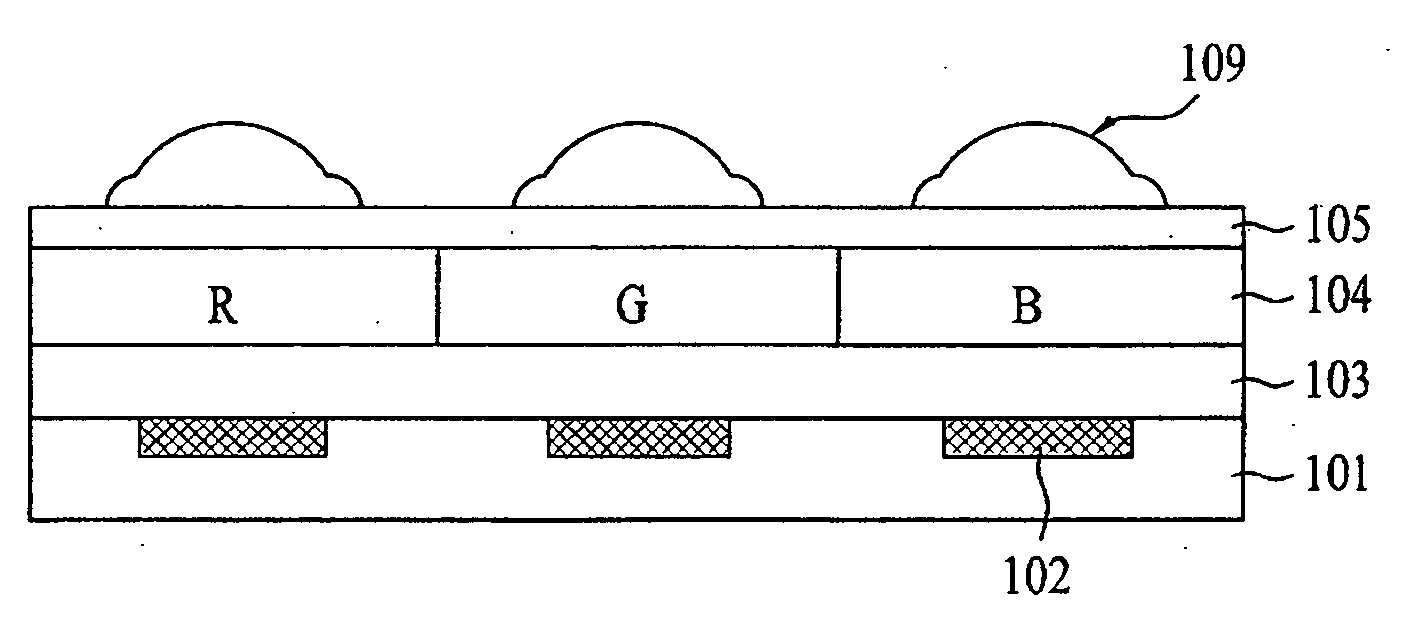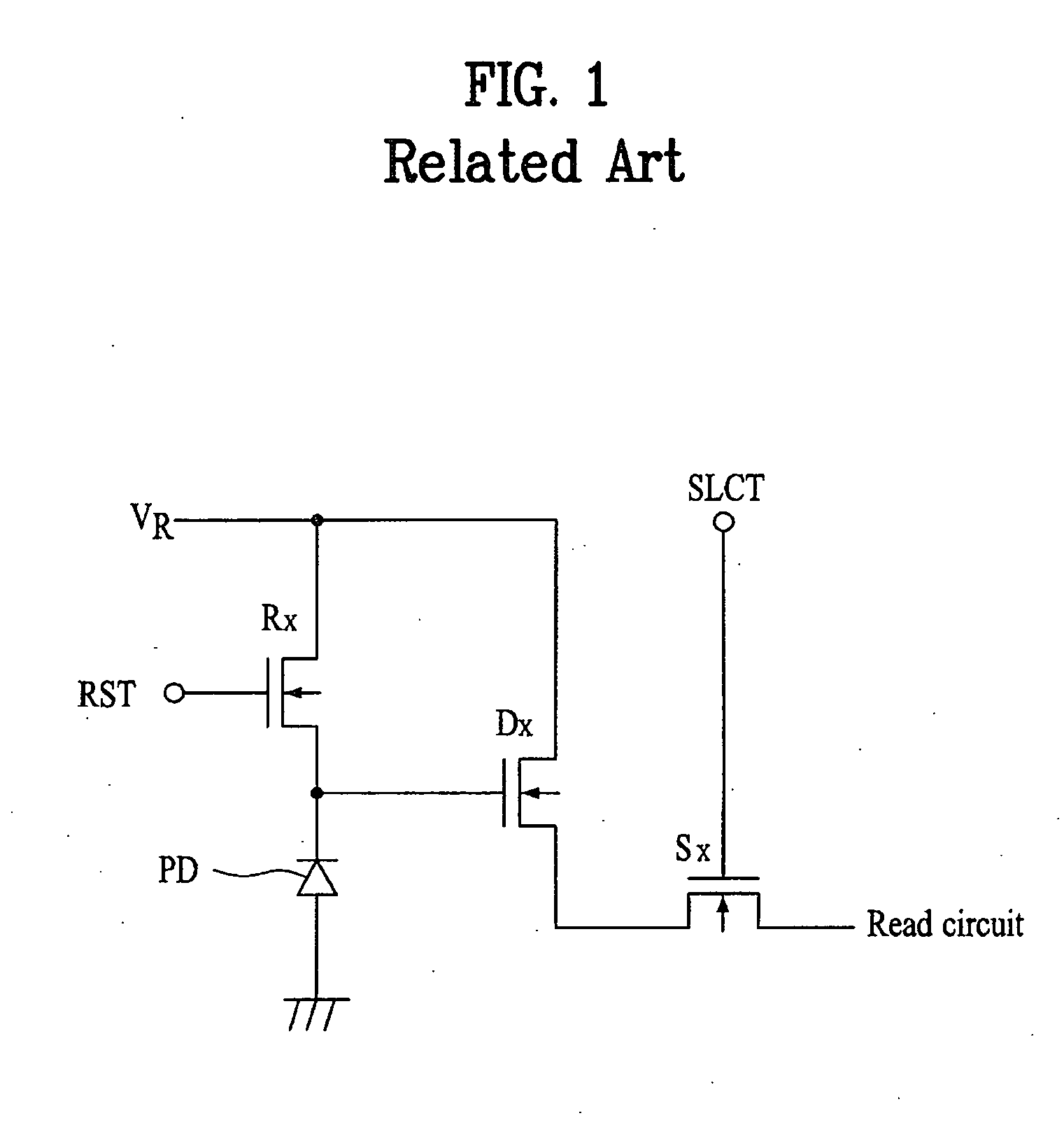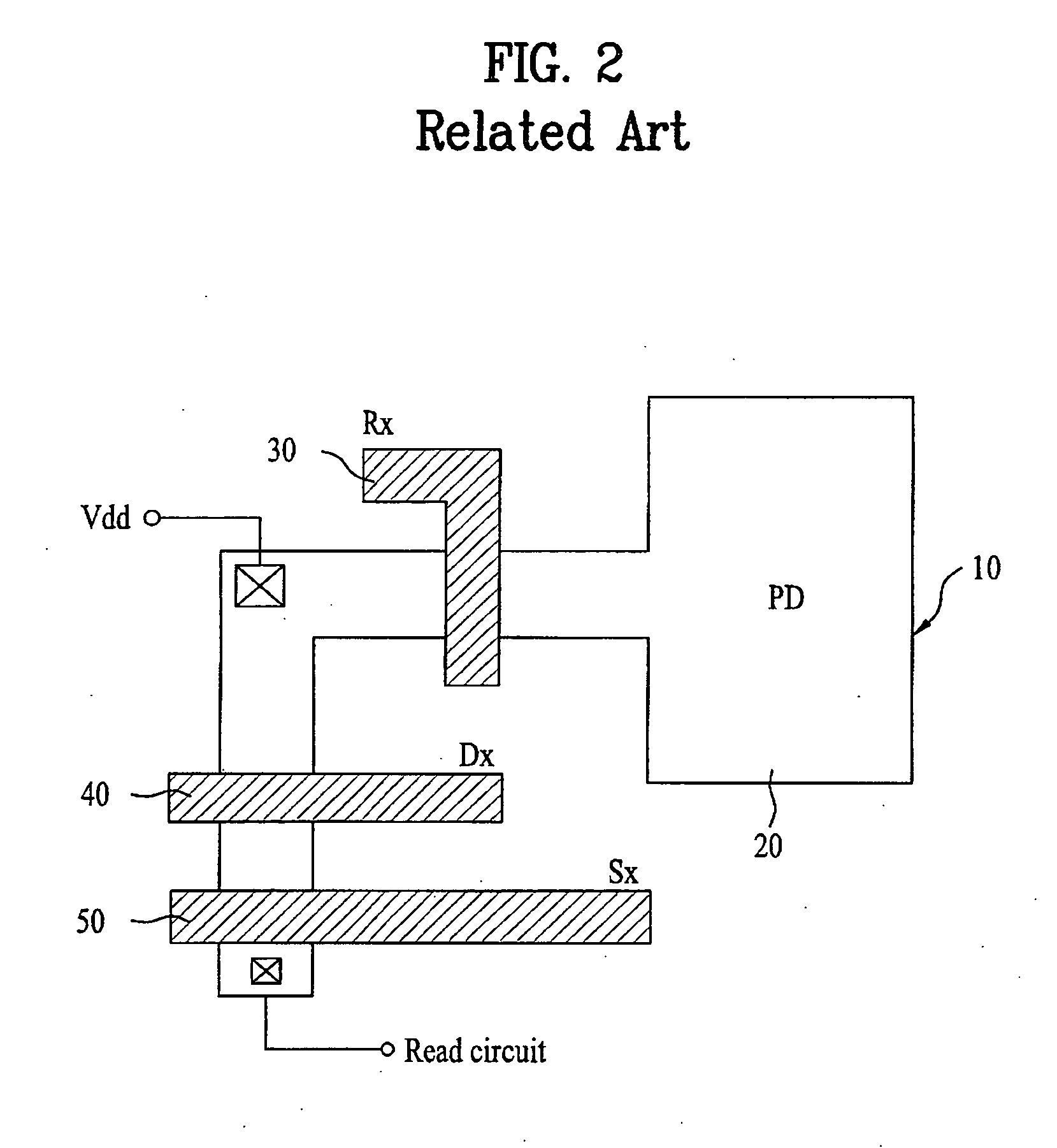CMOS image sensor and method for fabricating the same
- Summary
- Abstract
- Description
- Claims
- Application Information
AI Technical Summary
Benefits of technology
Problems solved by technology
Method used
Image
Examples
Embodiment Construction
[0027] Reference will now be made in detail to embodiments of the present invention, examples of which are illustrated in the accompanying drawings. Wherever possible, like reference designations will be used throughout the drawings to refer to the same or similar parts.
[0028] Referring to FIG. 6A, an insulating interlayer 103 is formed on a semiconductor substrate 101 having at least one photodiode 102 formed in a predetermined surface of the semiconductor substrate. Each photodiode is configured with various transistors (not shown) and a unit pixel of the CMOS image sensor is formed. Photodiodes 102 are active devices for generating an electrical charge according to the intensity of an incoming light signal and may be a photo-gate type device. The insulating interlayer 103 may include an optical shielding layer (not shown) to prevent light from entering a substrate area other than at one of the photodiodes 102. A color filter layer 104, comprised of an array of red (R), green (G)...
PUM
 Login to View More
Login to View More Abstract
Description
Claims
Application Information
 Login to View More
Login to View More - R&D
- Intellectual Property
- Life Sciences
- Materials
- Tech Scout
- Unparalleled Data Quality
- Higher Quality Content
- 60% Fewer Hallucinations
Browse by: Latest US Patents, China's latest patents, Technical Efficacy Thesaurus, Application Domain, Technology Topic, Popular Technical Reports.
© 2025 PatSnap. All rights reserved.Legal|Privacy policy|Modern Slavery Act Transparency Statement|Sitemap|About US| Contact US: help@patsnap.com



